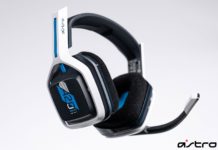It's hard not to smile when thinking about Hyperdimension Neptunia's games' premise. An actual console war between the major console manufacturers — portrayed through super-powered anime girls complete with flashy magical girl transformations — is absolutely nuts, but it works. And while the games have already graced the PS3 through a few sequels, Hyperdimension Neptunia Re;Birth1 marks the first time that the game is available on the PS Vita. But is it worth retreading if you've already enlisted in the console wars?
See, Hyperdimension Neptunia Re;Birth1 (HNRB1) is a remake of the first Hyperdimension Neptunia game that was originally released on the PS3 in 2011. As the name suggests, you take control of Neptune, Sega's unreleased Neptune console personified. And as consoles do, you're at a war with Noire (PS3), Vert (Xbox 360) and Blanc (Wii). But through a series of events, Neptune gets ganged up on, loses consciousness and suffers from amnesia, setting her on a grand adventure.
HNRB1 is a fairly traditional JRPG, and relies on tropes commonly seen in the genre, and especially in anime. You have the aforementioned amnesia, girls with huge assets that always like to bring them up in conversations, the tough acting but soft-at-heart persona, I mean the works. However, these things never really bothered me as much, given the context of the game itself. It's a parody through and through, and to take a game like this seriously and judge it by its tropes would be doing it a great disservice.

What makes HNRB1 a worthwhile investment, even if you've previously played the game on the PS3, is that it's not a direct port. It sports a lot of great additions and changes that really modify the gameplay in many ways. One of the most important aspects, which was easily the worst part of the original game, is the battle system, which is now completely reworked.
No more do you rely on terrible partner AI and simply hope they execute a heal at a critical time. You can freely move around the battlefield as every character in your party, and then execute a few real time moves that are based off a combo system. This combo system can also be customized further with new moves, which tends to break up the monotony of spamming the same attacks over and over. The ability to move during battle also has its tactical advantages. Positioning yourself in just the right spot between a few enemies means you can deal damage to all of them instead of a single target.
You will also gain access to the EXE Drive Gauge, which will govern one of two things: EX Finishers and EXE Drives. EX Finishers are essentially combo toppers, which you'll be able to execute once your Drive Gauge is completely full. These finishers are often pretty powerful, and the game does a good job at providing you a slew of these on a consistent basis. Once you have enough of them you can set up to four different ones per face button. Using an EX Finisher doesn't actually deplete your gauge, meaning you can keep reusing it during combat. However, EXE Drives will deplete your gauge, meaning you won't be able to continue using EX Finishers until it's restored, but the trade-off are extremely powerful and devastating attacks.
Most importantly however, since this is tied down to the overall enjoyment of battles, the battle speed which moved at a snails pace in the original has been sped up exponentially. In the original, battles would easily take longer than the steps taken between them. Animations were painfully slow and enemies had crazy amounts of health. Here, attacks and animations are quick, meaning you're in and out of battles relatively quick. You're actively seeking out enemies instead of hoping to avoid them, as random encounters have been scrapped in this version.

The game also allows you to essentially hack it to change the way some features work. As you progress, you unlock various Plans, which can be crafted and then activated periodically to either give yourself an advantage or perhaps make the game a bit more challenging. For example, you can build a plan that will build an entirely new dungeon for you to explore and level up in. After exploring it, you'll then get the option to build a few more Plans that will alter the way it works. For instance, you could make the enemies easier or harder, depending on your current level, or you could also change out the item rewards for it, meaning you can re-explore it, and be rewarded with completely new items.
Compile Heart has done both the game and its fans a great service by not only streamlining the gameplay, but adding in enough changes to make a second trek through the world of Gamindusti worthwhile. It's a fantastic JRPG that will still only appeal to a specific audience, primarily the Otaku crowd, but those willing to look past its outward appearance, and delve into its fun and engaging mechanics will undoubtedly come out with a smile on their face.









